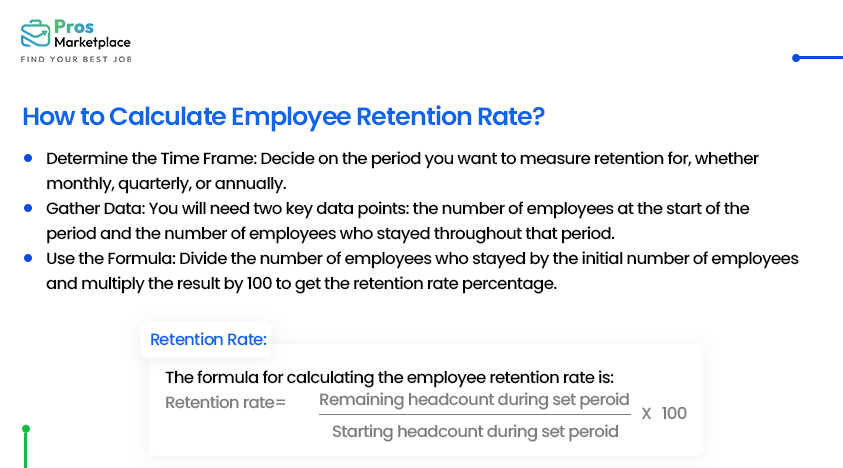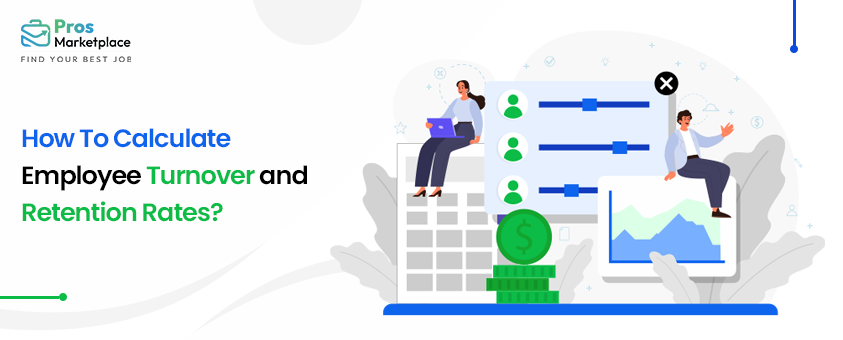Happy employees lead to happy customers.
That is why knowing how many employees stay or leave is important for companies. It shows how strong and steady the team is, and can really affect how well the company does.
However, tracking how many employees stay or leave can be tough. There are many reasons why people might leave their jobs, like not being able to grow, not having a good work-life balance, or not getting paid enough. Although change is inevitable, let’s start with understanding what they are.
What is the Employee Turnover Rate?
Employee turnover rate calculates the number of employees exiting a company. To calculate, here is the employee turnover rate formula:

A turnover rate of 10% or less is often considered healthy. Here is what it focuses on:
- Who is leaving (new hires vs senior employees)
- Reasons for leaving (compensation, work environment, career growth)
- Patterns in departure timing
- Calculating turnover regularly and conducting exit interviews can provide valuable insights to improve employee retention calculations.
What is the Employee Retention rate?
The employee retention rate measures the percentage of employees who remain employed with an organization over a specific period.
To calculate the retention rate, you need to follow a specific formula based on the information provided in the search results:

Why should you track employee turnover and retention?

Employee turnover reduces morale and disrupts top-performing teams. Several problems may occur when coworkers constantly come and go, including fragmentation of work structures, individual and team impairment, and efficiency reduction. Employees require time to develop rapport and identify and create a cultural understanding with other staff members. It is easier to achieve this when there is constant replacement of the members. However, a positive turnover and employee retention rate bring with them many benefits:
Cost Saving
High turnover can affect a company’s financial health. Hiring and training new employees is expensive, and when employees leave frequently, companies are forced to allocate additional resources to fill these roles. Additionally, costs related to product losses, such as reduced productivity and disruption of operations, can also impact a company’s financial resources.
Productivity
When employees leave, their valuable skills and knowledge are difficult to replace. This loss of knowledge and skills can negatively impact productivity, innovation, and overall performance. Organizations should invest in employee development programs and training to ensure employees have the skills and growth to continue within the organization.
Customer Satisfaction
Consumer satisfaction has also been referred to as essential in business. This is because a high churn rate means that different customers are brought in by different employees, which could bring about inconsistency at the end of the day and a poor customer experience. Lack of employee engagement makes the employees remain passive, uncontested, and unappreciated, yet they are able to offer good customer service, hence leading to customer loyalty and satisfaction.
Employee Satisfaction
Employee morale is a value that the organizational culture can significantly influence, and in turn, be a direct determinant of the level of productivity and employee retention. High turnover results in tension and stress in employees, or in other words, instability or volatility of employees’ behavior, at least in terms of high turnover, is a source of anxiety in employees. This results in high turnover, more absenteeism, low organizational commitment, high working pressure, stress, and lower employee motivation.
Brand Reputation
Reputation has always been described as one of the most valuable assets that any business can possess, and damage to this asset often comes with significant costs for a company in terms of the overall business and the prospects of growth.
Boosts Profits
The recruitment process of bringing new employees into an organization requires both time and resources. Specific tasks involved include selecting candidates, screening applicants, conducting interviews, and training new hires. When the employee turnover rate remains consistently high, organizations are forced to continually recruit and train staff, thereby spending valuable resources that could be allocated to more profitable areas of the business.
Conclusion
The process of calculating employee turnover and retention is more than just that number. It is an important strategy for businesses that want to succeed in today’s competitive world. High retention rates indicate interest in the workplace, compensation, and growth opportunities. By tracking retention, companies can identify areas for improvement and implement strategic plans that will increase employee satisfaction and loyalty. Brand reputation and market competition are also affected as a revolving door of employees can damage a company’s image, deter potential employees, and lead to customer dissatisfaction. Conversely, employee satisfaction and a reputation for longevity can serve as powerful recruiting tools and ensure customer brand loyalty.
It’s about creating a culture of inclusion, empowerment, and excellence.
Also Read: What to Do When an Employee Suddenly Quits?







